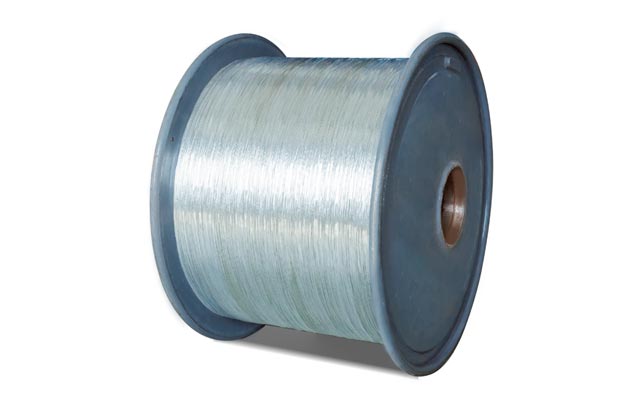Symbol TCPurity /Size 0.025-500 mm2Type Tinned stranded wireElongation /Tensile /
Tinned Copper Stranded Wire
Tin plated copper stranded wire is a composite wire composed of multiple thin copper wires twisted by a twisting machine and coated with a tin layer on its surface. It combines the high conductivity of copper, the flexibility of twisted structures, and the corrosion resistance of tin layers, and can be widely used in high reliability and high weather resistance scenarios.
Core Features
Conductivity: The conductivity of copper core combined with tin coating results in a slightly higher skin effect than silver plated wire in high-frequency scenarios, but better than bare copper wire.
Corrosion resistance: The tin layer isolates copper from contact with air and moisture, and is resistant to oxidation, salt spray, and weak acid corrosion. It is suitable for humid, marine, and industrial polluted environments.
Weldability: Tin plating has a low melting point (232 ° C), making it easy to bond with solder and reducing the risk of virtual soldering.
Flexibility: The twisted structure disperses stress and has a dynamic bending life of over 10000 times.
Manufacturing Process
The production process of tinned copper stranded wire includes copper material preparation, twisting, tin plating, post-treatment, and testing. Specifically, as follows:
Stranded Copper WireWire drawing: Electrolytic copper rod is drawn to the target diameter through multiple passes, with a surface smoothness Ra ≤ 0.2 μ m.
Annealing: Annealing under nitrogen protection to improve the flexibility of copper wire (elongation ≥ 25%).
Stranded wireBundle twisting process: Multiple thin copper wires are twisted into twisted wires with a larger cross-sectional area.
Tin plating treatmentPreprocessing:
Electrolytic cleaning: Alkaline solution (pH 10-12) is used to remove surface grease from twisted wires.
Acid activation: Soak in dilute sulfuric acid (10%~20%) or fluoroboric acid to activate the copper surface.
Electroplated tin plating:
Plating solution formula: 40~80g/L stannous sulfate (SnSOx), 50~100g/L sulfuric acid (H ₂ SOx), 0.5~2g/L gelatin.
Process parameters: current density of 1-3 A/dm ², temperature of 20-30 ° C, coating thickness of 1-3 μ m.
Post processing:
Passivation: Treat with chromate solution (pH 4-5) to prevent the tin layer from oxidizing and yellowing.
Lubrication: Apply microcrystalline wax or silicone oil to enhance the bending resistance of the stranded wire.
Drawing and shaping: The wire diameter is calibrated by the mold, and the surface roughness Ra is ≤ 0.4 μ m.
Quality InspectionCoating thickness: detected by X-ray fluorescence method (XRF), with an error of ± 0.1 μ m.
Electrical resistivity: tested using the four terminal method, in accordance with GB/T 3956 standard (≤ 0.017241 Ω· mm ²/m at 20 ° C).
Adhesion: Tape peel test (ASTM B571) or bending test (no detachment around axis diameter ≤ 10D).
Tinned Copper Stranded Wire List
| Sectional Area (Standard) |
Single Wire Diamter |
Tolerance |
Elongation |
| 0.08-0.249 mm2 |
0.08-0.62 mm |
±0.002 mm |
≥12% |
Tinned Copper Stranded Wire Application
Tin plated copper stranded wire has the advantages of strong corrosion resistance, long service life, excellent flexibility, resistance to bending fatigue, and a cost only 1/4~1/3 of silver plated stranded wire. It is widely used in the following scenarios:
Electricity and EnergyTransformer lead: Twisted wire with a cross-sectional area of 50-300mm ², reducing contact resistance and temperature rise.
Photovoltaic power station: 4mm ² tinned stranded wire connected in series with solar panels, resistant to ultraviolet radiation and salt spray corrosion.
Automotive IndustryHigh voltage wire harness: Tin plated stranded wire with a temperature resistance of 150 ° C (cross-sectional area of 6-35mm ²), used for connecting electric vehicle batteries.
Sensor wire: Multi strand ultra-fine twisted wire (0.08mm × 7 strands), resistant to engine vibration fatigue.
Marine EngineeringMarine cable: Tin plated layer+XLPE insulation, resistant to seawater corrosion (in accordance with IEC 60092 standard).
Underwater communication: A twisted pair cable (with a cross-sectional area of 1200mm ²) is used as a grounding conductor to ensure signal stability.
Industrial EquipmentWelding machine cable: High flexibility tinned stranded wire (such as 60245 IEC 51), supporting current output of 200~600A.
Robot cable: 7 × 0.1mm twisted wire, dynamic bending life ≥ 500000 times.
Electronics and CommunicationCoaxial cable shielding layer: Tin plated copper stranded wire braided mesh (coverage rate ≥ 90%) to suppress electromagnetic interference.
5G base station grounding: Twisted wire with a cross-sectional area of 70mm ², lightning leakage capacity ≥ 30kA.
Architecture and Lightning ProtectionLightning protection down conductor: 25~120mm ² tinned stranded wire, corrosion-resistant and conductive stable (GB 50057 standard).
Building grounding network: The composite stranded wire is buried underground and has a service life of ≥ 30 years.


